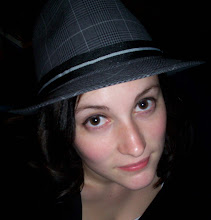For those not aware of the Steig Larsson juggernaut, this movie is the film adaptation of the second installment of the Millennium Trilogy, a series of books set in Sweden and concerning Lisbeth Salander (computer hacker, tough, persecuted, and all like tattooed n stuff) and Mikael Blomkvist (investigative journalist, determined, roughly handsome, defender of Lisbeth) who team up together off and on to solve crimes. Except they are much more than that, too. Lisbeth has many personal issues to sort out, and is an expert researcher with a lot of resources at her hands; Blomkvist is in a polyamorous relationship with his co-worker Erika (in the book, anyway, as this isn’t touched on in the films) and cares deeply for Salander. The crimes they solve are multi-layered, often far-reaching into Swedish politics, and involve men who hate women—the latter phrase being the original Swedish title of the first book, The Girl with The Dragon Tattoo.
The Girl who Played with Fire begins about a year after the last movie ended, with Lisbeth returning to Sweden after months of overseas travel. She is checking up on Nils Bjurmann, the guardian who abused her in the first film, but her interaction with him causes her to be accused of the murder of two aspiring journalists—who were working for Blomkvist’s magazine. Lisbeth goes into hiding and investigates why she has been set up, and Blomkvist, who doesn’t believe the allegations against her, does the same. He is unable to contact her, but she is watching him and he knows it. Separately and together, they discover that this crime goes much deeper than they expected, and will affect their closest friends and family.
This film has had mixed reviews; I even read one that gave it that nasty little dog symbol. (Especially strange, because dogs are cool, aren’t they?) I can’t understand that at all—I really enjoyed it. Because I’m a fan of the books, for me, it’s like when you want to reread a favourite book but don’t quite have the time, so you kind of skim through to the most important scenes and just read those. Watching these movies is like that. The film miss some seemingly important aspects of the book, but I do think they do a good job of condensing long books into two hours of film.
As with the first film, the strength lies in the casting and the honesty of the actors. Unlike in Hollywood, the actors don’t feel quite as plastic. Lisbeth Salander is supposed to be boyish and skinny, and Noomi Rapace is exactly that; she is hardly unattractive, but she is whippet-thin, bereft of curves, and leaves her underarms unshaven. Mikael Blomkvist is played with rugged allure by Michael Nyqvist; he is soft around the belly and his skin bears marks of acne, but he is one of the most appealing men in cinema because of it. Lena Endre is Blomkvist’s love interest, Erika Berger, and she also is as beautiful as the book says she is, while still rocking wrinkles and a curving belly. I wish more films were shot like this, with gorgeous actors that aren’t built by surgery and Botox but through talent.
Night scenes are hauntingly beautiful, shot as if in black and white with a hint of colour. While The Girl who Played with Fire misses the lovely snowbound feel of the first film, the city of Stockholm does sparkle in this one. Because I had the knowledge of the books behind me, I understood the movie well and enjoyed it very much, despite the subject matter—violence against women, political manipulation of the system to the detriment of Lisbeth—being tremendously unpleasant. It was well paced, interesting, exciting, and doesn’t hold back on the ugliness of violence and people. There is a wonderfully shot love scene between Lisbeth and her girlfriend Miriam Wu, as they make love in the dark and the elderly gentleman in the row behind me cleared his throat repeatedly. It didn’t feel gratuitous and I felt again embarrassed about American and Australian movies lagging behind in the world of film.
I do feel—and heard from Chris—that if you hadn’t read the books, it could be difficult to follow, to understand all the connections, and to get involved with some of the peripheral characters that are heavily introduced in the book but skipped over in the film. There are also some oddities in the movie: Blomkvist is unable to open an envelope by himself and demands a knife from a waitress at the cafe he is in; Millennium doesn’t seem to have any other articles on the go during the film, making the employees seem a bit lazy; there are some deaths that have very sappy signposting; people don’t call the police when they witness violence, instead taking retribution into their own hands.
Altogether it remained, for me, a touching film, filled with brutality. It shows how Blomkvist and Salander can remain friends after being lovers, and does well at recreating the main characters and their world. It’s unable to do the impossible task of getting everything right, but tries very hard and it shows.
In summary: Meets Expectations (which were high.)


No comments:
Post a Comment
Opinions, opinions! Come one, come all.